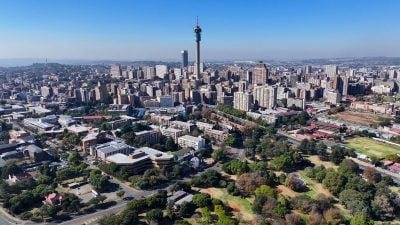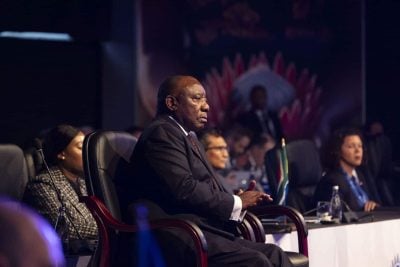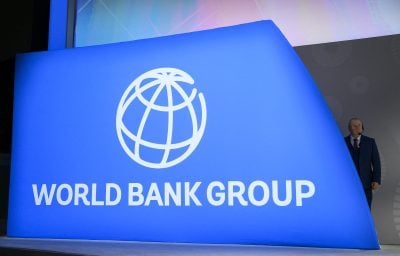Egyptian plans to build a new capital city east of Cairo were hit by the withdrawal last week of the Chinese construction firm that held the contract to build new government buildings.
The contract would have been the centrepiece of the ambitious scheme to relocate the nation’s capital city to a new location between Cairo and the Suez Canal. China State Construction Engineering Corporation (CSCEC) had signed a memorandum of understanding (MoU) in September 2015 to build the new parliament, twelve ministerial buildings, a national convention centre and an exhibition complex.
President Abdel Fattah al-Sisi had announced the project in order to create employment, attract foreign investment to the country after the years of upheaval and reduce congestion in Cairo itself. The total project area is 700 sq km. Over time it is expected that Cairo, the new city and the Suez Canal Zone will combine to produce a giant conurbation. There is no doubt that the scheme is ambitious but critics argue that the country has more pressing needs than the construction of the new capital.
Over time it is expected that Cairo, the new city and the Suez Canal Zone will combine to produce a giant conurbation. There is no doubt that the scheme is ambitious but critics argue that the country has more pressing needs than the construction of the new capital.
The entire project is being developed by the New Administrative Capital Company, which is jointly owned by the Ministry of Housing, Utilities and Urban Communities and the military. CSCEC has not followed up its MoU with a binding contract.
The Housing Ministry said that there had been a disagreement over pricing. The CSCEC deal replaced an earlier MoU that had been signed with Mohamed Alabbar of the United Arab Emirates but which was also cancelled.
The chairperson of the New Administrative Capital Company, Ayman Ismail, said: “The two parties didn’t reach a mutually satisfactory agreement in respect to the price per metre of implementing the project. The Chinese company wanted to depend on local Egyptian construction companies, which would have been more costly for us. The company has received lower prices from Egyptian contractors.”
Those unnamed Egyptian companies are now expected to develop the administrative district, the construction of which is scheduled to take seven years. The chairperson of the parliamentary housing committee, Alaa Waly, said that such projects were “not new to Egyptian construction companies. They have the capacity and expertise to implement huge projects set forth by the state”.
Remaining contractors
Contrary to some press reports, it is believed that China Fortune Land Development Company (CFLD) has retained its contract to build and manage 14,000 acres of the second phase of the project. This is to include shopping malls, universities, hospitals and factories. In addition, Arab Contractors of Egypt is believed to be continuing with its own contract. The company’s vice chairperson, Sayed Farouk, commented: “We are currently carrying out 78 residential buildings over two phases in addition to the main utilities network in the government district, including water and sanitation lines and roads.”
In addition, Arab Contractors of Egypt is believed to be continuing with its own contract. The company’s vice chairperson, Sayed Farouk, commented: “We are currently carrying out 78 residential buildings over two phases in addition to the main utilities network in the government district, including water and sanitation lines and roads.”
The government expects the development of the first phase to cost a massive $45bn, although presumably some of that investment will be recouped through property sales and corporate and income taxes.
The administrative centre will include a presidential palace, government ministries, parastatal headquarters and a financial district. It is also expected that foreign embassies will move to the centre. The city is to comprise a combination of high rise and low rise areas, separated by parks. This will require substantial water supply as the project area is currently desert. It is to encompass an airport that could eventually become one of the largest airports in the world, new universities and a technology and innovation park.
The city is to comprise a combination of high rise and low rise areas, separated by parks. This will require substantial water supply as the project area is currently desert. It is to encompass an airport that could eventually become one of the largest airports in the world, new universities and a technology and innovation park.
Large residential areas are also planned that will help to tackle Cairo’s severe housing crisis. Although to be built in phases, they will include 1.1m homes and house an estimated 5m people. Work on building the main highway between Cairo and the new city is already underway. It was announced on 15 February that a gas fired power plant designed to serve the new capital was 70% complete. With generating capacity of 4.8 GW, it will be the biggest power plant in Egypt and comes with a $3bn price tag.
It was announced on 15 February that a gas-fired power plant designed to serve the new capital was 70% complete. With generating capacity of 4.8 GW, it will be the biggest power plant in Egypt and comes with a $3bn price tag.
Neil Ford
Want to continue reading? Subscribe today.
You've read all your free articles for this month! Subscribe now to enjoy full access to our content.
Digital Monthly
£8.00 / month
Receive full unlimited access to our articles, opinions, podcasts and more.
Digital Yearly
£70.00 / year
Our best value offer - save £26 and gain access to all of our digital content for an entire year!
 Sign in with Google
Sign in with Google 


